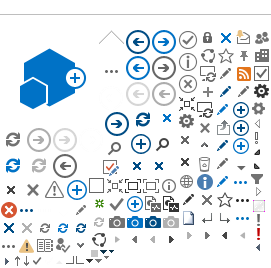The NIH has been using radioactive materials nearly since its inception. Although Building 21 was opened in 1950 for the purpose of conducting work with non-trivial amounts of radioactive materials, usage slowly expanded into most labs in buildings across campus, over time. By the end of the 1960s, nearly 700 different locations outside of Building 21 were using radioactive materials (65% of these locations were in Building 10). Because electronic recordkeeping was not available for decades, the Division of Radiation Safety (DRS) has a limited amount of data available on historic usage of radioactive materials at NIH. Potentially useful records like contamination surveys were only required to be kept a short amount of time relative to the history of the NIH. Records relating to measuring doses for occupational workers through either dosimetry or bioassay were required to be kept indefinitely, as were waste disposal records. However, these records do not readily provide information about where on campus a particular radionuclide was used. Despite this, the DRS is slowly digitizing all available information that can identify rooms that have used radioactive materials in the past, so that the information can be electronically available and searchable.
Presently, the regulations governing radioactive material use are much different today than in NIH’s early years. One specific aspect of these regulations concerns how to decommission a facility that is no longer going to be using radioactive materials. There are multiple possibilities which result in that outcome – demolishing a building (e.g. Building 7), converting the building to non-lab space (e.g. Building 2), or relinquishing a building from NIH control entirely (e.g. off-campus leased facilities). In all of these cases, a detailed radiological clearance is required. In order to do this survey properly, a Historical Site Assessment (HSA) is performed to determine what rooms used long-lived radioactive materials. The HSA directly correlates to how thoroughly any given space will be surveyed.
So how does this affect the NIH community? The most likely is when DRS is asked to review drawings for renovations. DRS now looks at all spaces that will have some demolition performed and conducts research about whether a lab or office was ever used for long-lived radioactive materials in the past. If research confirms the use of long-lived radioactive material, DRS will conduct additional surveys of the space at the beginning stages of the renovation process.
It may seem excessive to survey a lab’s original surfaces many decades after the last documented use of radioactive materials, but it is a necessity because there are no documented survey records from when a legacy lab was cleared. The clearing standards have changed over the years and were less stringent than the current standards employed today. Some radionuclides used at NIH decades ago may have long half-lives, possibly leaving residual contamination that may be present today (e.g., in ductwork, floor tiles, waste lines). Conducting a survey and documenting the results at the beginning of a renovation can confirm its HSA and clearance surveys can be adequately defended to the Nuclear Regulatory Commission.
For more information or questions, please contact DRS at: (301) 496-5774.
